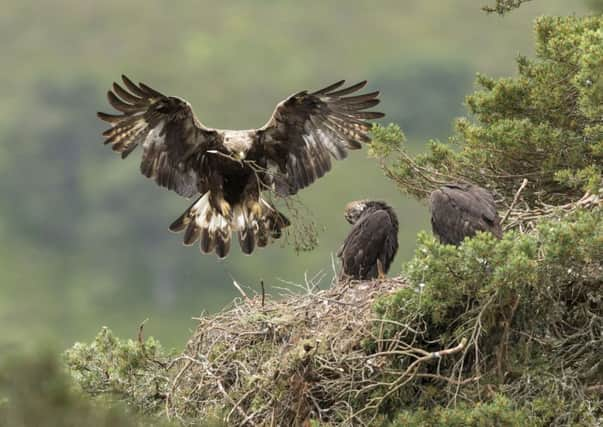Disappearance of Scottish raptors not always classed as crime


New figures show that the overall number of crimes fell to 231 in 2016-17, representing the lowest figure recorded in five years, while conviction rates have reached their highest rate in seven years at 96 per cent.
However, despite this progress, figures for crimes against birds remained relatively high, Holyrood’s environment, climate change and land reform committee heard yesterday.
Advertisement
Hide AdAdvertisement
Hide AdFish poaching remained the most commonly recorded type of offence, but offences relating to birds were the second most commontype of wildlife crime. In the five years from 2012 to 2017, 21 buzzards, 18 red kites, and two Peregrine falcons were victim of illegal poisoning.
There were also disappearances of a number of tagged birds of prey – six golden eagles, three hen harriers, incidents which are not recorded as crimes by Police Scotland– which was highlighted as an area of concern.
Mike Flynn, chief superintendent at the Scottish SPCA, told the committee: “You will have seen how many birds the scientists say have been poisoned. Unless it can be proved that the poisoning was inadvertent after a legally laid agricultural thing, an offence has been committed, but the issue is detecting the person who was responsible.”
David Green of the Procurator Fiscal Service added: “Such offences occur in remote areas where they’re not necessarily observed and it’s the gathering of that evidence that is a problem.
“You can find that you’ve got raptors that have been poisoned, but were they poisoned where they were found or potentially many miles away?
“All of those things are challenges to us and we will do whatever we can, working with partners, to get sufficient evidence and – in all cases where it’s possible to do so – we will take proceedings”.
Police Scotland Detective Chief Superintendent David McLaren said that finding evidence of crime in rural areas had proved challenging due to a lack of CCTV footage and witnesses.
He also said he remained wary of any complacency in efforts to continue tackling wildlife crime. “These are the recorded crimes, there’s still an awful lot of investigation that goes in relation to suspected wildlife crimes that are reported to us.
Advertisement
Hide AdAdvertisement
Hide Ad“There is certainly much wider awareness of wildlife crime and a lot of the work that we do with partners highlights the real feeling, across the country, that the public, generally, want to see a reduction in wildlife crime.
“We hope that the partnership work that we are doing to raise awareness and our prevention work are having some effect, but I caution that when the numbers are so small, any fluctuation is difficult to interpret.
“Prevention is at the key of what we’re trying to do across the whole wildlife crime piece so anything that’s showing us a reduction is excellent.”
Scottish Liberal Democrat environment spokesperson Rebecca Bell said: “Wildlife crime presents its own distinct set of challenges. While crime figures have fallen, the disappearance of tagged birds of prey is a cause for concern and a blow to Scotland’s world-renowned natural heritage.”